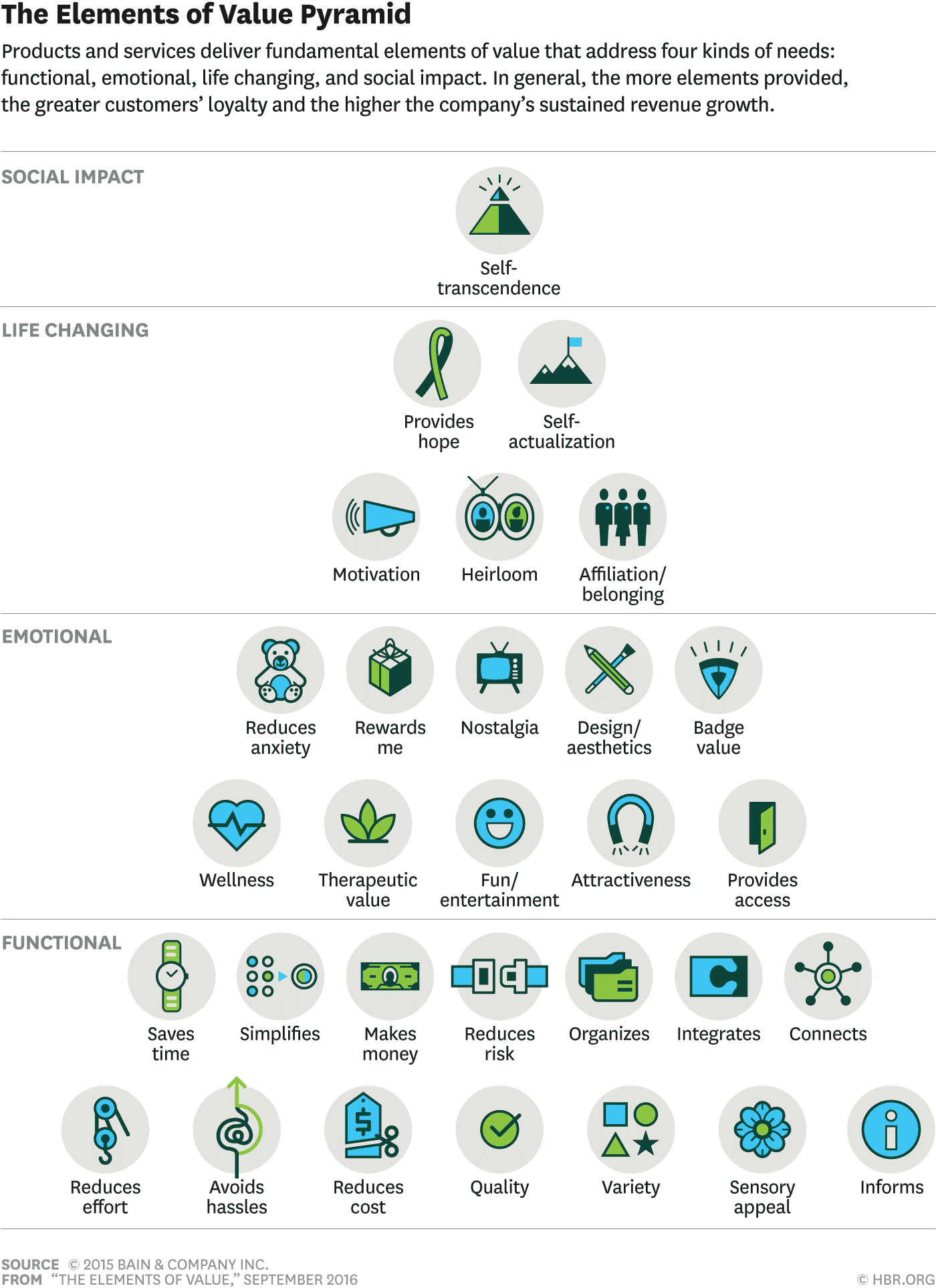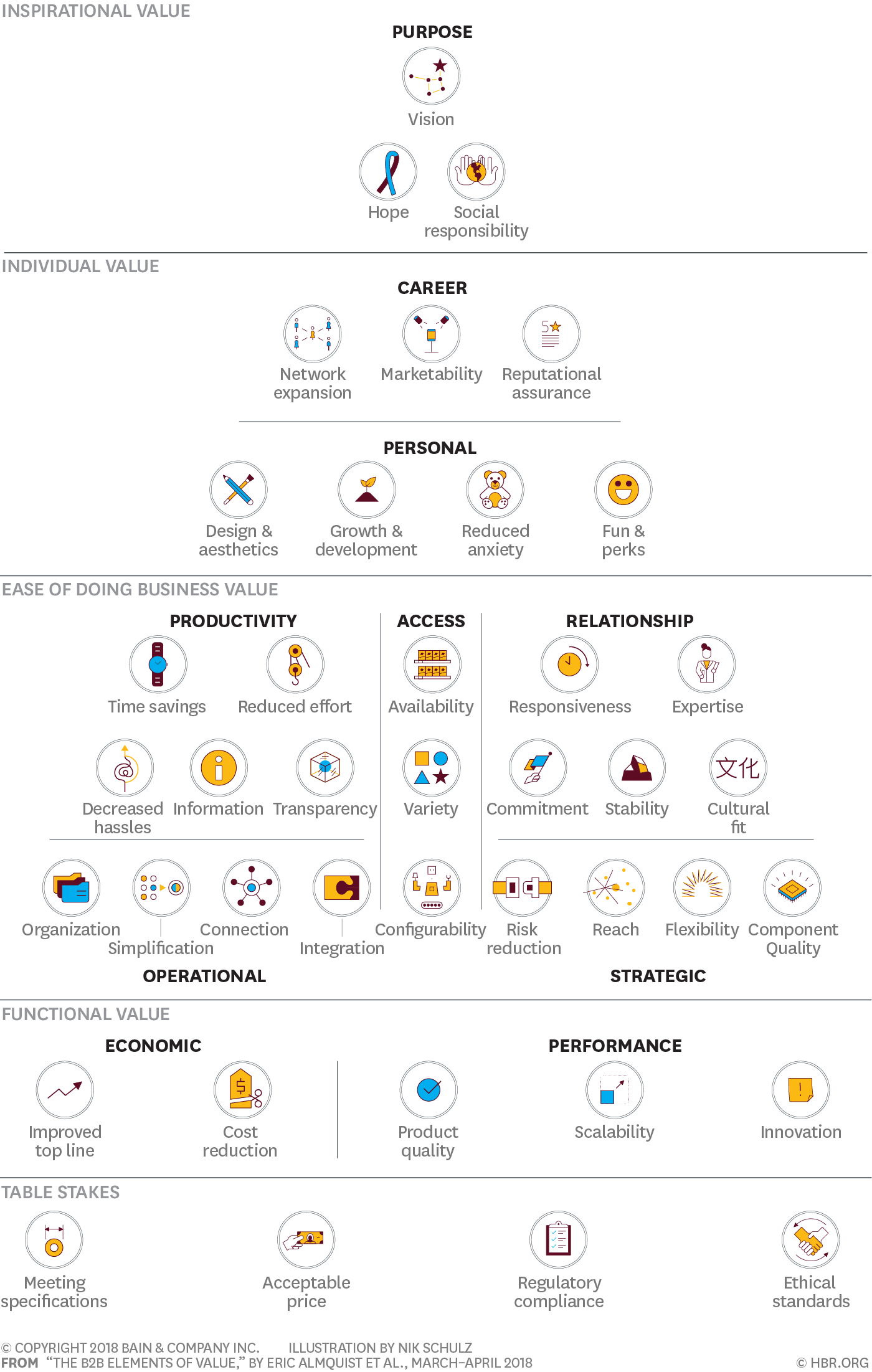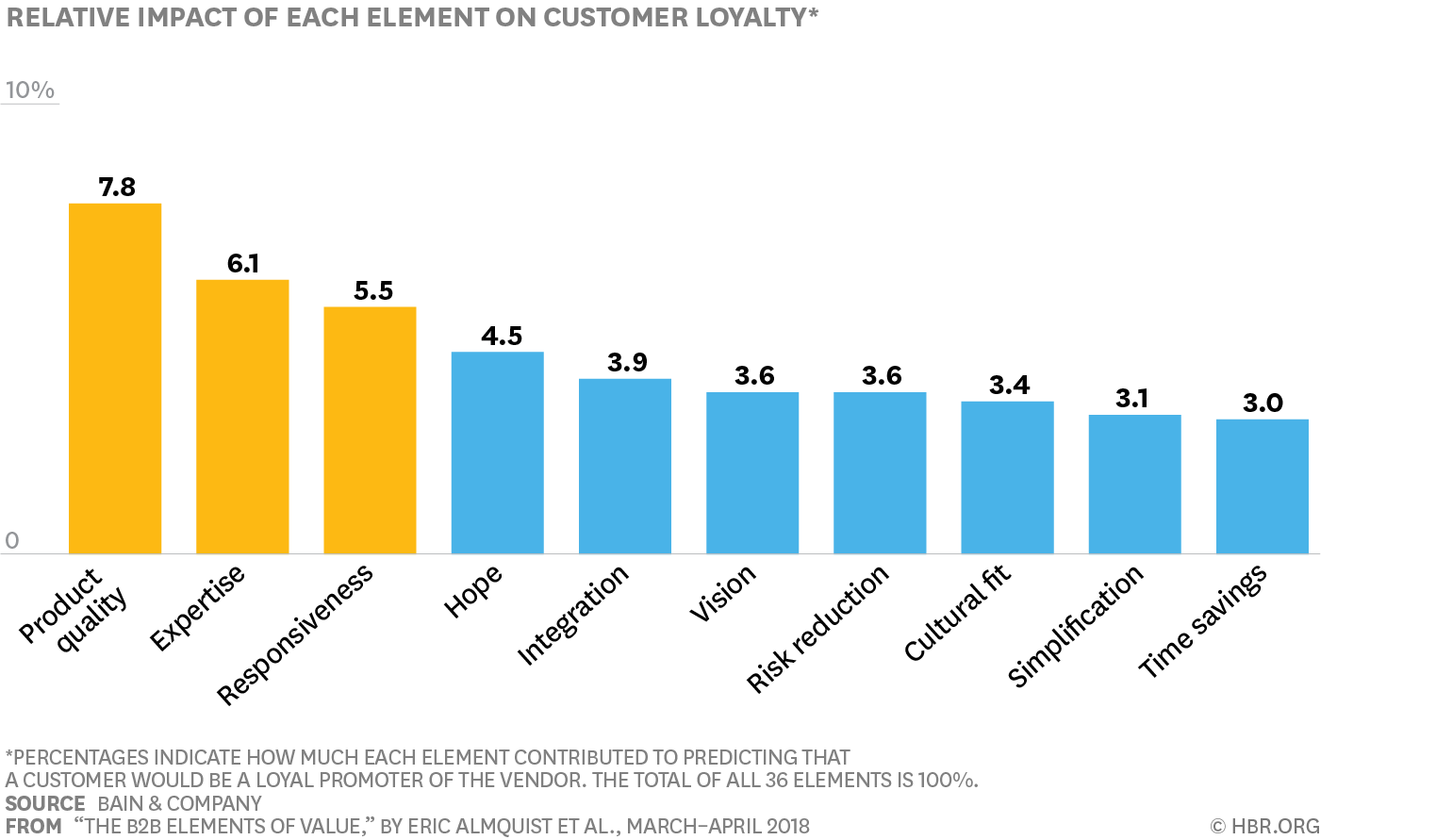
Thinking about the Value Elements in a Holistic Manner
Understanding what your customers truly value can reap benefits: clearer differentiation, more pricing power and bigger market share.
Understanding the components of value is creating opportunities for companies to improve their performance in current markets or break into new ones.
A model of customer value allows a company to come up with new combinations of value that its products and services could deliver.
Bain has identified 30 “elements of value” that offerings provide customers into a pyramid with four levels: functional, emotional, life changing, and social impact.

A company’s customer relationships and revenue growth
Companies doing well on multiple elements grow revenue at a faster rate than others.
Strong performance on multiple elements correlates closely with higher and sustained revenue growth.
Companies that scored high on four or more elements had revenue growth 4 times greater than that of companies with only one high score.
Amazon, for instance, achieved high scores on 8 mostly functional elements, illustrating the power of adding value to a core offering.
Across all industries, perceived quality affects customer advocacy more than any other element.
After quality, the critical elements depend on the industry.
In food and beverages, sensory appeal, ranks next.
In consumer banking, provides access and heirloom - a good investment for future generations because of the connection between money and inheritance.
The high ranking of smartphones stems from how they deliver multiple elements of perceived value - provides access, reduces effort, saves time, and organizes, connects, integrates, induces variety, fun and entertainment. Manufacturers of these products—Apple, Samsung, and LG got some of the highest value ratings across all companies studied.
Which Elements Are Most Important?
What customers value in products, varies by industry.
Top 5 value elements influencing loyalty for 10 types of businesses
Consumers perceive digital firms as offering more value
Digital companies make consumer interactions more convenient and enticing, and excel on saves time and avoids hassles.
Omnichannel retailers win on some emotional and life-changing elements. For example, they are twice as likely as online-only retailers to score high on badge value, attractiveness, and affiliation and belonging.
Zappos, for example, scored twice as high as traditional apparel competitors did on those two elements and several others. Overall, it achieved high scores on eight elements—way ahead of traditional retailers.
Netflix outperformed traditional TV service providers with scores 3 times as high on reduces cost, therapeutic value, and nostalgia. Netflix also scored higher than other media providers on variety.
Bain has organized the 40 kinds of value that B2B offerings provide customers into a pyramid with five levels.

The B2B elements of value framework helps companies mastering the intangibles of the customer’s total experience—all the service, support, interactions, and communications encompassing an offering.
Improving on the elements of value enables vendors
to better meet customer needs
B2B companies can use an elements analysis to understand how they fit into the overall customer experience, and identify what customers would expect from any enhancements, as to revise their value propositions in a way that will help set them apart from the competition and meet their customers’ needs better.
The winning companies choose new value elements to deliver over time.
The commercial potential of the elements of value model lies in developing new types of value to provide. The elements can help them identify new value once again.
Some companies have refined their product designs to deliver more elements, or to identify where customers perceive strengths and weaknesses, by focusing on quality (the results of using its products), saves time, and reduces cost. These 3 elements had the greatest effect on customer satisfaction and loyalty, and the company was able to build competitive advantage with them.
Stimulate ideas for new products and for elements to add to existing products
The value elements can help managers creatively add value to their brands, products, and services and thereby gain a competitive edge.
Value elements additions are best-fit when the company can deliver them while using its current capabilities and making a reasonable investment, and when the elements align with the company’s brand. The elements of value work best when a company’s leaders recognize them as a growth opportunity and make value a priority.
Creating value in corporate responsible and sustainable ways
A company’s value is no longer measured solely by the size of its profit, but also by the long-term economic, environmental and social effects of its business operations.
Sustainability Strategy | Adaptation, Resilience and Change
The pressure for companies to adapt to altered conditions in terms of resource constraints and social demands are offering unique opportunities for competitive advantage where they are advantageously managed.
A holistic approach to sustainability
A holistic approach to sustainability can unlock opportunities to bring about synergistic efficiencies where conventional growth strategies can no longer deliver.
Senior executives by increasing their understanding of sustainability are better euipped to tune into key global economic, environmental and social trends: from globalized value chains and the increasing scarcity of natural resources, to climate change and growing inequality, as well as early detection and monitoring of issues critical to their company’s reputation, and pinpointing opportunities that will help them to consolidate their market position and drive innovation and boost profitability and growth.
Consulting and support around sustainability | Definition of KPIs, and progress monitoring
If well managed and effectively communicated, a holistic approach to sustainability management can achieve:


